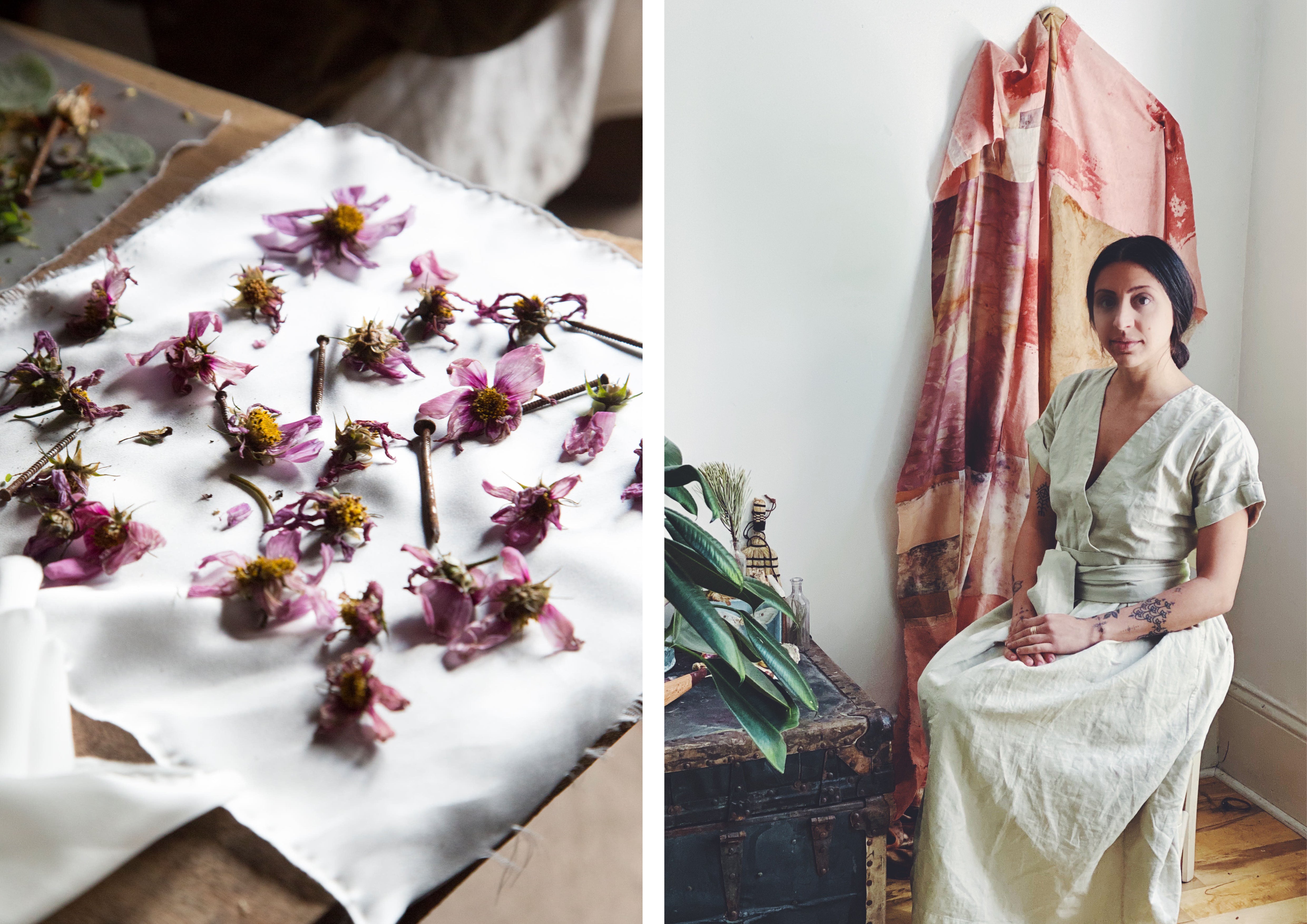
Natural dyer and textile designer Cara Marie Piazza uses a range of foraged ingredients, plants and botanicals to dye cloth into a range of rich colours. Based in New York, her work merges together colour, art and healing, and she uses traditional techniques such as shibori and bundle dyeing.
We talk to Cara about her journey so far and some simple tips for making a dye bath at home...
Can you tell us a little about your background and journey?
I grew up in New York City, where I was deeply influenced and observant of nature's concrete cages and cement playgrounds, and yet mesmerised by how green always found its way through the cracks. I have been making since I was a small child, and luckily I was always encouraged by my parents to explore all forms of creating. I attended Laguardia in Manhattan and then studied textiles at The Chelsea College of Art in London.
Can you tell us a little about the history of some of the traditional techniques you use?
Natural dyes have been the main source of colouring cloth since we began to wear clothing, some 10,000 years ago! We can trace back certain dye recipes all the way to Pliny the Elder. Colour was used to signify rank and place in royal courts as certain colours were harder to achieve. Natural colour has a terroir somewhat like wine. Kings and Queens would wear purple. To get just one ounce of Murex purple you would need around 70,000 shells, so you can imagine how expensive it would be to dye just one coat!

How did you first get into natural dyeing?
I was initially introduced to dyeing in my senior year at college. Disillusioned with the toxicity of the fashion industry, both physically and mentally, I was in search of a way to participate in a sustainable and meaningful way. I took a workshop in dyeing with onion skins as a part of University and was immediately hooked by it.
Is there a particular dye you like working with the most for its colour, texture or depth?
Honestly, no! That would be like asking me to choose a favourite child. Each dye stuff can produce a rainbow of colors just by playing with pH, temperature, vessel and even your mood! Currently I really love working with Cutch for the deep red/brown tones it produces.
Do you find that there is a link between colour, mood and healing?
Everything, all matter and life forms, vibrate and resonate at their own unique frequencies, including colour. Plants possess medicinal and healing properties, and their own specific vibrations that facilitate healing and bringing our bodies into equilibrium. When cooked, like food, they are transmuted into dye, and it feels natural to me that they would also then help facilitate healing. These days we are so visually inundated and over stimulated with synthetic colours, screens, electromagnetic fields and waves that bring us out of our natural alignment. Natural colour is brilliant, it breathes, moves, mutates and ages just like we do.

Can you tell us about the workshop you are holding for TOAST?
For our workshop we will be learning how to dye with healing flowers and kitchen scraps to create a creative masterpiece on silk. Through gently steaming petals, food wastes, and ingredients you can find in your kitchen, we will learn how to treat fabrics to make them fit for dyeing. Through only a little steam, you will learn to transmute assorted flowers into beautiful patterns on your fabric. The class will also cover using natural additives to create cosmic patterns.
Do you have some simple tips for dyeing at home?
My first tip for dyeing at home is - find a pot and make it your dye pot! And always keep your dye bath at a simmer. Something that's easy to use is onion skins. They are tannin rich so will dye your cloth strongly without the addition of a mordant. You could also extract even more colour by combining your onion skins with 10 avocado pits. The longer you leave your garment in the dye bath, the longer the colour will last. You can use half of the weight of your garment in onion skins and just let it simmer away.

Where would you usually go in the city for inspiration?
Before the virus, I would find my inspiration by walking. And still now to a degree to do my foraging for plants. The pulse and energy of the city is one of my greatest sources of inspiration, getting myself lost and letting my feet lead me. The hum of all of the New York characters and their stories feed me and my creativity. I miss museums and book stores the most.
Are there any artists or designers you particularly admire for their originality, designs and thinking?
This is something that always changes for me. I am often more inspired by performance artists, poets, dancers - people who use their body as their medium. My peers in my field I am also consistently inspired by. Right now, I am looking at the work of Anni Albers, Ariana Reines, Emma Kunz, people who synthesize the esoteric and chthonic forces that drive us and they orient them with their work.
Imagery by J Curry. Cara wears the Cotton Linen Wrap Front Dress.
Cara's Virtual Dye Workshop for TOAST will take place on 2nd June. Sign up here.
Add a comment